The Best 'Mission: Impossible' Action Scenes
Brian De Palma's first Mission: Impossible film wasn't packed with action setpieces — there are only three, really, but those three are all top-tier action filmmaking, and one of those three defined the series for years to come. In the two decades since, the series has been tackled by a variety of directors — John Woo, J.J. Abrams, Brad Bird, and now Christopher McQuarrie — each of whom bring a slightly different balance of action and espionage to their respective mix.
Paramount in all the best Mission Impossible setpieces, however, is the physicality of Tom Cruise (and, at times, his co-stars) and a direct simplicity that lets Cruise and many stunt performers shine. We've examined the major action concepts in the five films in the series to find the best Mission Impossible action scenes and show-off setpieces. (And, OK, we've highlighted a couple of the worst, too.)
Note: Below we talk about scenes from Mission: Impossible – Rogue Nation, but the stills used are from the trailer, and we've kept spoilers to a minimum. That said, there are still some spoilers here for Rogue Nation.
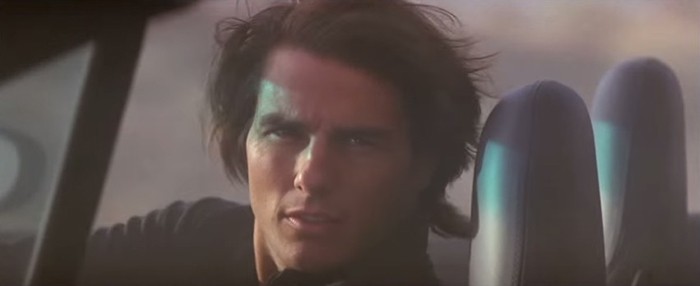
20.
The Movie: Mission: Impossible II (2000)The Setup: Ethan Hunt meets Nyah (Thandie Newton) and their cars dance.
The second film in the series doesn't take long to establish itself as vastly different from the first. That could be a very good thing, but warning bells go off during this goofy and visually incoherent flirt-turned-car chase that quickly becomes a literal dance with spinning cars. A better version of this scene may exist in John Woo's rumored long initial cut of the film, but this final version is laughable.
***
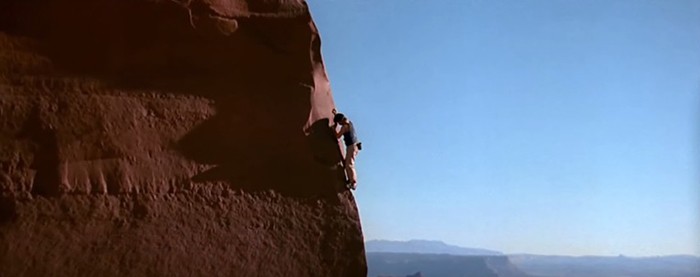
19.
The Movie: Mission: Impossible II (2000)The Setup: On vacation, Ethan climbs a mountain with no safety harness.
It's a great idea: re-introduce Ethan Hunt for the second film with a long push-in on his free-climb in Moab, Utah. The first shot is terrific, but the bulk of the scene is lensed and cut in a way that undermines the performance of Cruise and his doubles, and dispels any sense of danger. It's meant to convey exhilaration and casual danger, but there's no rush of adrenalin. There's mostly just a sense of safety and even weightlessness — precisely the opposite of the feeling that should coil in your gut while watching.
***
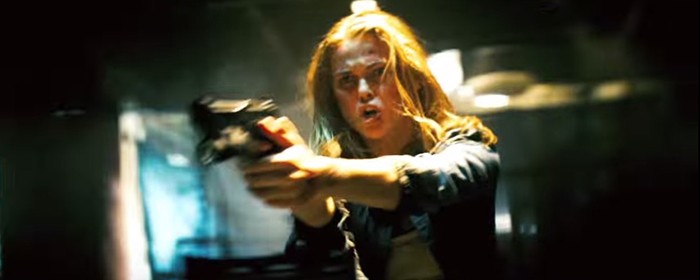
18.
The Movie: Mission: Impossible III (2006)The Setup: Drawn back into action when a colleague is engandgered, Ethan's operation leads to a helicopter chase.
A routine but well-executed gunfight leads to a helicopter chase that is anything but routine as its path veers into a field of giant wind turbines. At this point J.J. Abrams and his crew didn't have the action chops we'd see later in the Star Trek films, though the seeds are planted, especially in the helicopter chase. There is an ever-escalating series of dangers to evade as copters veer through giant spinning blades, but there's no spontaneity; each beat feels calculated as a riff on the basic visual pun. Each beat is planned, of course, but the best sequences in the M:I series keep us from thinking about it in the moment. Keri Russell's performance is the highlight of this sequence, along with the sense of impending doom her story provides.
***
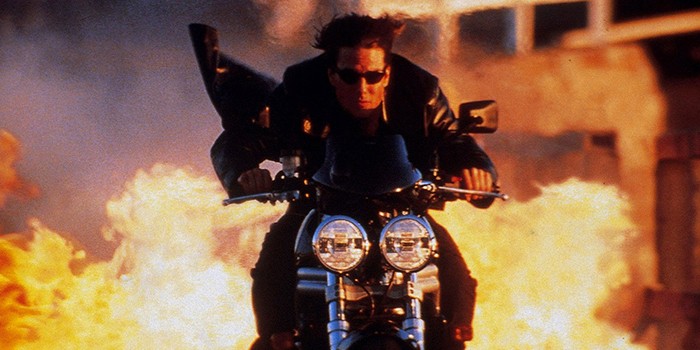
17.
The Movie: Mission: Impossible II (2000)The Setup: It's the end of the movie so there has to be a big fight, and this one is nuts.
In a different movie, say, Torque, this foot chase with spinning leaps of gunplay, followed by a motorcycle chase (with spinning leaps of gunplay) followed by a knife fight might be a "get the audience on their feet" showstopper. Here, it's a tangle of choppy silliness that has exactly the wrong effect. Let's recognize the stunt driving, wire work, and editing, which together provide the goofiest highlights, while also accepting that the feel is all wrong.
***
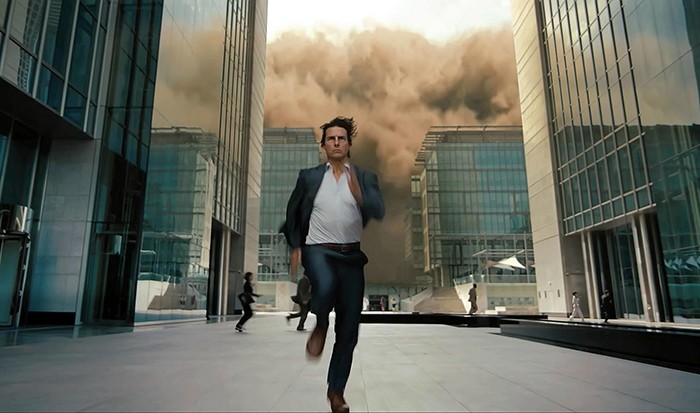
16.
The Movie: Mission: Impossible – Ghost Protocol (2011)The Setup: After a document transfer goes wrong, Ethan chases Hendricks into a sandstorm.
Much of Ghost Protocol's action holds up outside the confines of an IMAX theater, but the sandstorm sequence suffers in home viewing. The concept is terrific. The impending arrival of massive storm clouds is set up at the beginning of the setpiece prior to this, so on some level we're waiting for this sandstorm chase to happen. On an IMAX screen the effect is great, but at home this is the one place where Ghost Protocol looks excessively digital and murky, and where Cruise and the stunt performers get a bit lost.
***
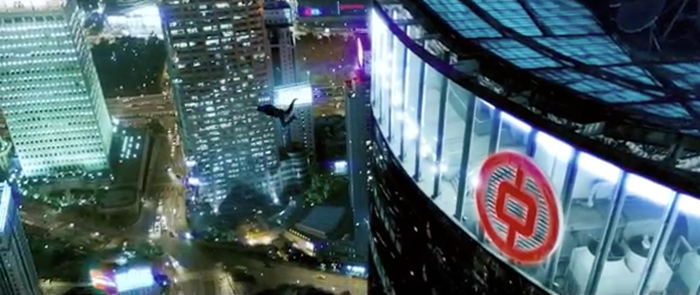
15.
The Movie: Mission: Impossible III (2006)The Setup: The IMF locates the MacGuffin in Shanghai, and drops in to steal it.
After a cutesy "distract bad guys with baseballs" opening, this sequence offers its showstopper moment: Cruise (and/or a double) leaps from a rooftop with only a safety wire — that we don't see at first — preventing his death. That series of shots, together with another set showing Ethan swinging from one building to another, are great. While the concept is done well here, it is perfected in Ghost Protocol, and this sequence leads to a street chase that has Cruise running like a very muscular puppy after the rolling MacGuffin, er, Rabbit's Foot. In retrospect, this feels like a rough draft for the Burj Khalifa + sandstorm couplet in Ghost Protocol.
***
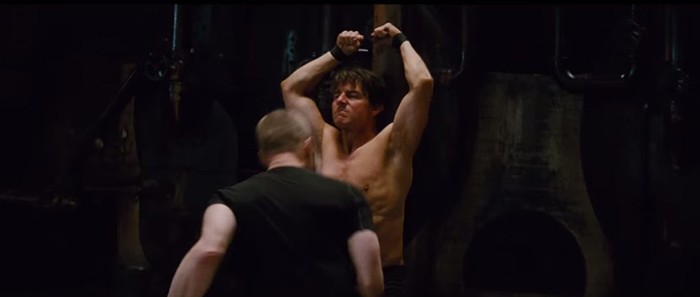
14.
The Movie: Mission: Impossible – Rogue Nation (2015)The Setup: Ethan escapes the Syndicate.
This sequence does double-duty, establishing Rebecca Ferguson as a vital player in Rogue Nation, and giving Cruise a similar opportunity to flex and fight that we see in the hospital escape from Ghost Protocol. It's simple stuff done very well, and gives Ferguson the first chance to show her own chops. Her work, combined with the limber power of one particular move from Ethan Hunt, seen as he extricates himself from being handcuffed to a pole, are the highlights.
***
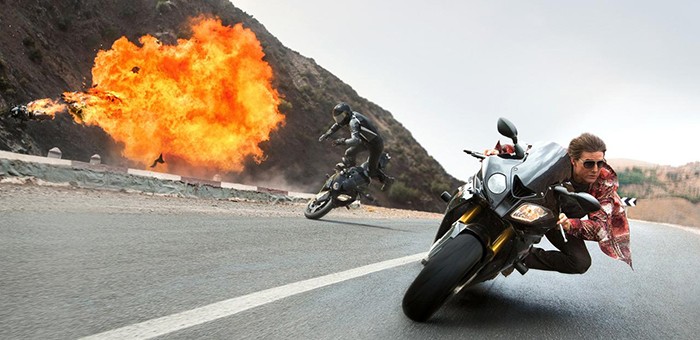
13.
The Movie: Mission: Impossible – Rogue Nation (2015)The Setup: The bad guys have the MacGuffin, so naturally Ethan chases them, despite being in rough shape.
A couple sequences in Rogue Nation, including this one, feel as if they were explicitly designed to revise and improve upon sequences from Mission: Impossible II. Using the template set down by Ghost Protocol, McQuarrie and his team go for wide shots, clear staging, and relatively clean editing. The effect is to make Cruise seem to always be the one driving both car and bike, even when he can't possibly be, and this multi-stage sequence succeeds as a crisp and classic action concept. Special points go to a moment early in the sequence when the camera is inside a flipping car to provide a nauseatingly visceral experience, and another later when Cruise dings his knee on the pavement while guiding the motorcycle through a sharp turn. Both moments, especially the latter, give this long sequence something unique.
***
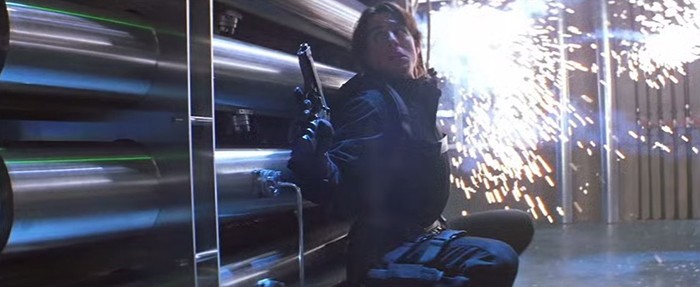
12.
The Movie: Mission: Impossible II (2000)The Setup: Ethan is destroying the bad virus when the bad guy shows up, and the shootout begins.
Here M:I 2 comes closest to feeling like a real John Woo movie, and this is the sequence where Cruise's performance meshes best with Woo's inclinations. In other places, the twirling not-quite-Chow Yun Fat moves play as put-on and even odd. The success of these films is predicated on a specific sort of investment in Tom Cruise/Ethan Hunt that makes their personalities almost interchangeable. The put-on moves of II break the immersion but this confined shootout allows Cruise to do some of his best action work in the film, working Woo's twirling moves into something that feels his.
***
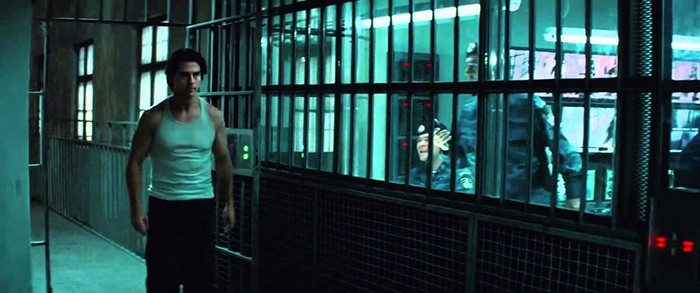
11.
The Movie: Mission: Impossible – Ghost Protocol (2011)The Setup: IMF team members break Ethan Hunt out of a Russian prison, but he stops to help a friend on the way out.
This isn't quite the same sort of setpiece that impresses elsewhere in the series, but that's part of its appeal. As the opening sequence we know the stakes are probably pretty low; consequently this is an opportunity to play. And so Dean Martin blares on the prison loudspeakers as guards and prisoners clash, that rattling din all a backdrop for the interplay between Cruise and Simon Pegg. The bonus is an opportunity for Cruise to engage in a little gymnastic action.
***
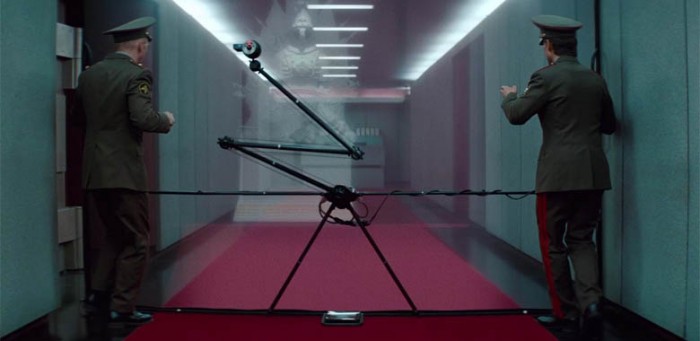
10.
The Movie: Mission: Impossible – Ghost Protocol (2011)The Setup: The IMF must extricate data from a storage room inside the Kremlin.
In another of Ghost Protocol's less than standard setpieces, CG and tech help facilitate an incursion into one of the most insanely well-guarded buildings in the world. For the most part this isn't an action setpiece in the same manner as the rest of Mission: Impossible's concepts, but the explosive ending can't be overlooked. The kooky gadgetry and tense elegance of the situation help frame Simon Pegg's more significant integration into the story, not to mention a few well-earned laughs. Equally important, the coda is a hospital escape that blends the humor of sticking Ethan out on a ledge and the thrill of an improvised zipline ride executed with panache.
***
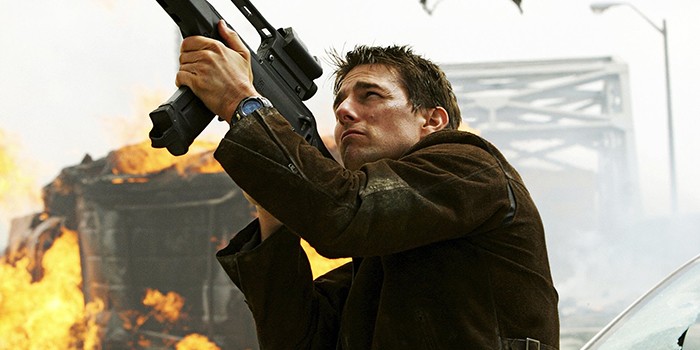
09.
The Movie: Mission: Impossible III (2006)The Setup: The IMF is attacked while escorting the villain Davian across the Chesapeake Bay Bridge.
The action highlight of J.J. Abrams's film is this extended sequence set on a long, isolated bridge. There's a drone strike (points for incorporating that relatively early!) and a rare example of IMF agents being in a position to preserve civilian life. This sequence explodes into literal firestorm as Ethan begins to understand that he may be in way over his head, and the film's sense of danger, already well-established by Philip Seymour Hoffman's vicious, spitting intensity, comes into sharp focus. The narrow confines of the bridge are fully explored as a setting, and Cruise's athleticism contrasts nicely with Hoffman's frighteningly composed performance.
***
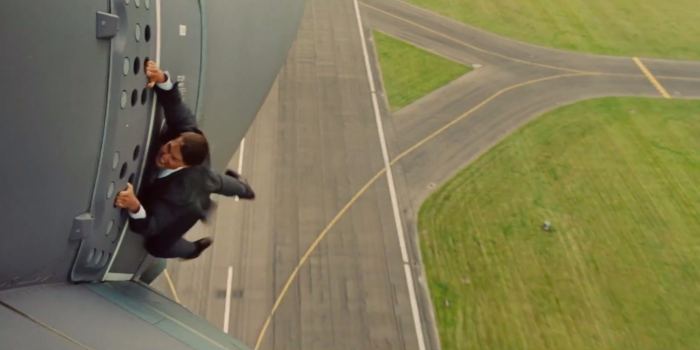
08.
The Movie: Mission: Impossible – Rogue Nation (2015)The Setup: Trying to keep dangerous cargo out of the wrong hands, Ethan Hunt clings to the side of a plane as it takes to the air.
This is the trailer sales pitch for Rogue Nation, and with good reason — how often do you see the star of a film strapped to the side of an actual airplane in flight? In truth, I ended up wanting more from this sequence thanks to the precise manner in which it ends. If McQuarrie & Co. gave us the end of this sequence that is implied by some of the action it might be one of the series' best setpieces. As is, the simple power of the core image, especially when seen on the big screen, can't be denied.
***
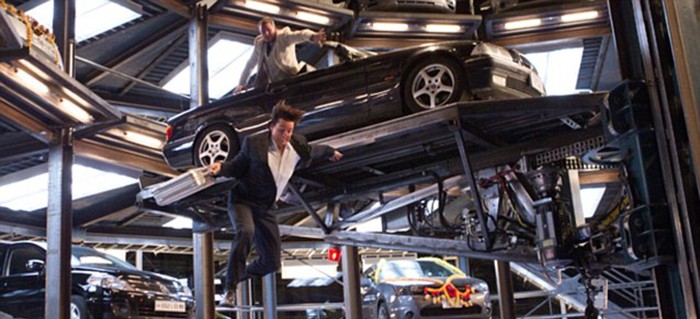
07.
The Movie: Mission: Impossible – Ghost Protocol (2011)The Setup: The confrontation with Hendricks becomes direct in an automated car park.
What a weird location for a setpiece this is, and against all odds it works spectacularly. There's the same sort of "running after the MacGuffin" action we saw in the Shanghai infiltration in M:I 3, but here the stakes feel higher, and there's an impressive sense of weight and immediacy to the action as Cruise, Michael Nyqvist, and their doubles navigate an ever-moving set of platforms. The culmination is a blunt and brutal final action from Nyqvist, forcing and Ethan Hunt to experiment with a ridiculous but bizarrely effective solution to the scene's big problem. (It doesn't hurt that subsequent scenes make a joke out of the capper to this sequence.)
***
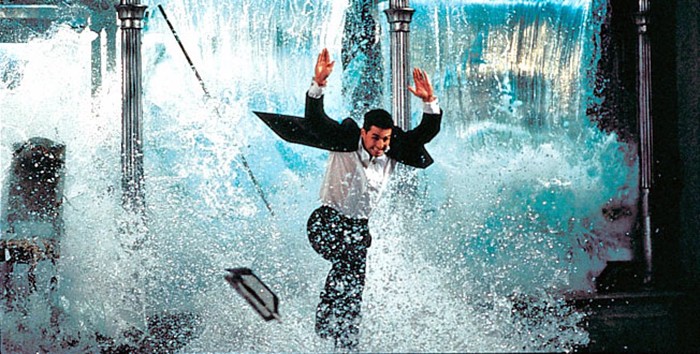
06.
The Movie: Mission: Impossible (1996)The Setup: Ethan Hunt blows up a big restaurant fish tank in order to escape the antagonistic Kittridge.
It's so simple: blow up a big fish tank in a restaurant so the hero can escape. But putting Cruise front and center for the aftermath of that blast, with the actor clearly running like hell in front of a crashing wall of water, does everything to sell the sequence. It's also effectively the announcement of a standard for the entire series: "we're doing this for real (to the degree we can.) As the first big event in Brian De Palma's movie, this sequence, small as it may be in comparison to what comes in later movies, establishes everything about Mission: Impossible event scenes.
***
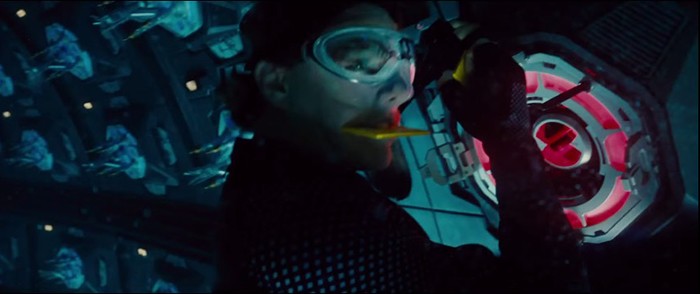
05.
The Movie: Mission: Impossible – Rogue Nation (2015)The Setup: Ethan Hunt must replace a data card to facilitate an operation, but the receptacle is underwater, and security measures force him to free-dive the operation.
Cruise reportedly learned to hold his breath for six minutes to prep for this sequence, which takes place in an underwater server/data storage unit. Whether that was necessary is open to question, but the effect of this sequence is significant regardless, and I held my own breath watching it. Christopher McQuarrie and his editor keep the tension high with Ethan Hunt battling his own minuscule oxygen reserve and the physical structure itself in order to accomplish his goal. This also has the benefit of an unusual ending compared to other scenes in the series.
***
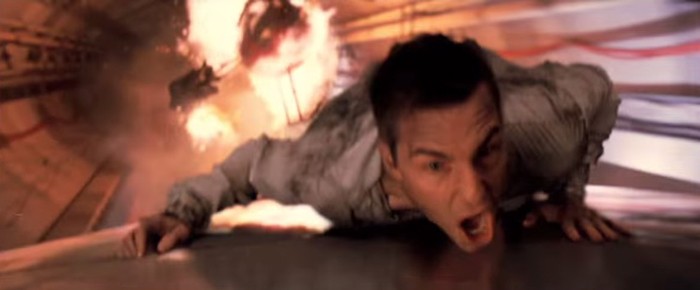
04.
The Movie: Mission: Impossible (1996)The Setup: The climax of the first film features a chase atop a train complicated by a pursuit helicopter.
As mentioned above, there are really only three big setpieces in the first Mission: Impossible, but incredible resources must have been saved for this blend of studio work, digital and miniature effects from ILM, and real-world supertrain photography. Sure, this opens with some glaring studio/rear projection footage, but it's also De Palma operating with the pedal to the metal, with a lot of old Hitchcock thrown in, all so well conceived and constructed that it works. Even though much of the action is atop a giant model train, having a 140-mpg wind machine in Cruise's face does wonders, and the money shot (above) of Cruise being thrown forward from an exploding helicopter is just about perfect.
***
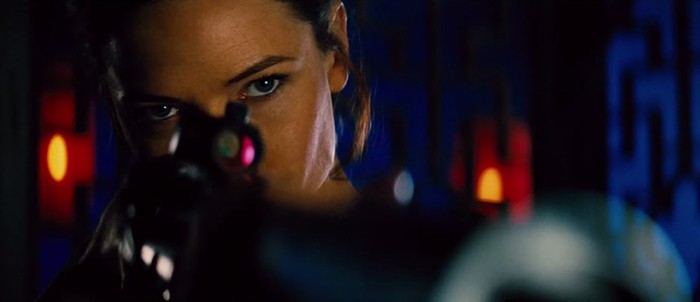
03.
The Movie: Mission: Impossible – Rogue Nation (2015)The Setup: Multiple forces converge on an opera performance hoping variously to take out or preserve a high-ranking official target.
The most Brian De Palma sequence in this series that wasn't actually directed by De Palma is this opera-house thrill ride that features many characters lining up at the Vienna Opera House to take shots at a target, or prevent others from doing so. The cinematography and editing are pitched just right as the action moves from the lobby to backstage, to the tech rooms and finally platforms high above the stage. It's not just De Palma, but Hitchcock that comes into play here, with several parallel lines of movement never losing sight of the main objective, despite hairpin turns in the action and opulent cinematography that captures the operatic setting.
***
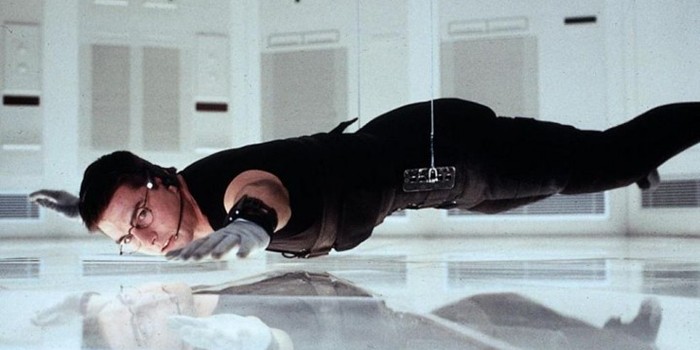
02.
The Movie: Mission: Impossible (1996)The Setup: Ethan infiltrates a closed room in CIA headquarters to steal data.
The wire hang from Mission: Impossible is the signature of this series to the extent that three sequels that followed either copied or riffed on one signature shot: Cruise, suspended by a wire, is arrested in a fall just before hitting the ground. (Cruise did the wire trick again in II and III; in Ghost Protocol it is emulated by Jeremy Renner when he drops towards a huge turbine.) It's a near-perfect piece of event filmmaking with incredible technique (including De Palma's trademark split diopter, employed when Jean Reno sees a rat) and a spectacular performance from Cruise. There's a meta- aspect to this wire act, too, as the sequence is nearly silent for much of its running time. This is certainly among the most quiet "action" setpieces ever made, and one of the best.
***
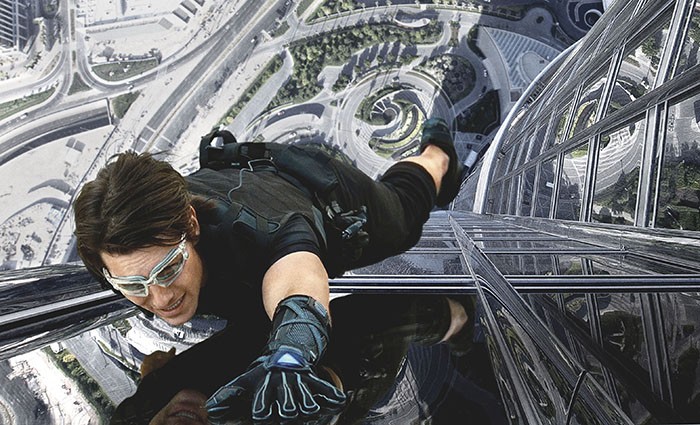
01.
The Movie: Mission: Impossible – Ghost Protocol (2011)The Setup: The only way to reach the server room of the world's tallest building is to approach from the outside, over 100 floors up.
There's nothing quite like the kickoff shot of this sequence, when Tom Cruise leans out of an empty window frame to slowly wrap himself around to the outside of the tallest building in the world. The camera is just over his shoulder, ready to follow him out. Projected in IMAX, this sequence, and that shot in particular, captures everything big-ticket filmmaking hopes to do. The sequence could probably work even emulated through studio builds, clever second unit shots, and CG. No doubt, cinematic tricks help build this sequence, especially when Cruise's gloves start to fail.
The legitimacy of the spectacle, however, as captured by Brad Bird and crew is jawdropping. Ethan Hunt's own reluctance to undertake the climb establishes high stakes. Intrigue inside the building provides parallel action. And Cruise's decent back down the building provides a high-energy capper for the stunt. This is one of the most grand sequences in big-budget film, and the best of the series.
